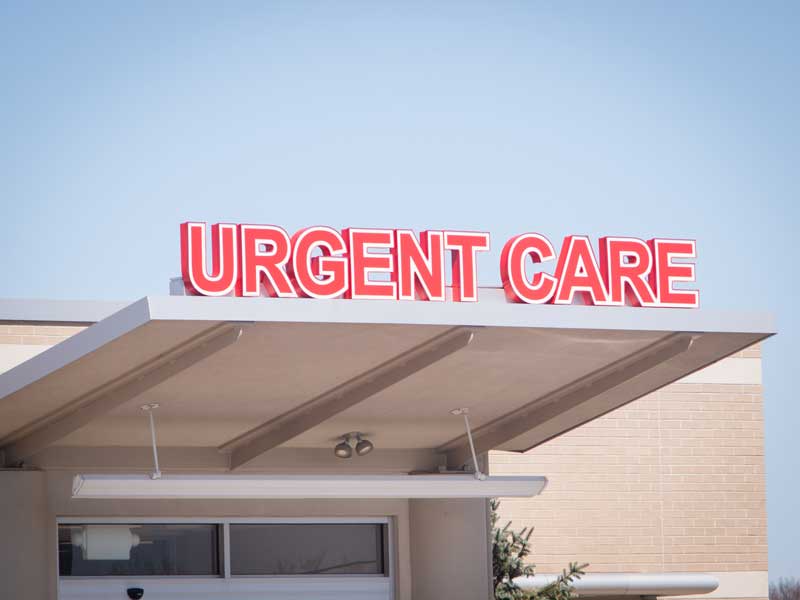How Urgent Care Clinics Are Pivoting During COVID-19 To Meet Patients’ Needs

Urgent Care Before the Pandemic
Urgent care has become an established piece of the healthcare puzzle. At the beginning of 2020, there were over 9,000 urgent care clinics in the United States, which rely heavily on high patient volume and generally shorter appointments.
Sean Parkin, founder of the San Francisco Bay area-based City Health Urgent Care, became interested in the field after realizing how many conditions were better served in settings other than emergency rooms.
“For everyone else [not experiencing life threatening emergencies], which accounts for about 70% of the ER volume, it’s a bad experience. You have long waits, and it’s about 10 times the cost of an urgent care visit,” he said.
Blue Cross Blue Shield also found that one in three millennials don’t have primary care physicians and because they are less likely to seek out preventative care, urgent care often fills those gaps as well.
However, most of these practices were not designed nor operated to be a central hub for care during a global pandemic. Viruses such as COVID-19 require more protective resources for staff and patients that urgent care clinics were not built to accommodate.
The Pandemic Response
A lot of the early COVID-19 response fell onto these underprepared clinics. At the onset of the pandemic, very few of them had access to COVID tests; most could only rule out the flu and route patients to a hospital. Still, many patients flocked to their closest urgent care.
Once lockdowns began, urgent care clinics, like many other medical practices, faced a major drought of patient volume. One survey found patient volume dipped to an average of 16 per day in early April.
Eventually, tests became more readily available, and the role of urgent care during the pandemic became clearer. By the end of July 2020, about 79% of clinics were testing for COVID-19, and patient volume had soared to a 54% increase nationally compared to July 2019.
Parkin saw the writing on the wall and ensured that City Health made the right pivots. They eventually became the first practice in California to gain access to rapid COVID tests.
The next step for clinics like Parkin’s was optimizing their mass testing operations. Even City Health, with their speedy adjustment, found themselves battling up to a 50 percent no-show rate for their COVID testing appointments, making it difficult to properly staff clinics. To address this, the practice soon implemented an internally developed scheduling and results delivery system built using DrChrono’s open API.
Optimizing their medical EHR was an integral piece of nailing this pivot.
“You need to invest time and customize it to your practice. Either go with the off-the-shelf system, or you hire a consulting company to custom make something that is more for your workflow,” Parkin said.
Flexibility has been key, not just to City Health, but to clinics everywhere, and those who adapted certainly reaped the rewards. By July 2020, 50% of urgent care patient visits were for COVID tests.
The Next Pivot: COVID-19 Vaccine Administration
The current and future steps for urgent care are administering COVID-19 vaccines. Facilities like City Health, should they move to vaccine administration, are well equipped to handle high patient volume, quick appointments and the necessary follow-up for two-shot vaccines like Pfizer and Moderna.
While the roll out continues to include more people, one thing Parkin notes is the necessity to partner with local agencies and communities to ensure equitable access.
“People in our communities that are the most disenfranchised are the ones who need vaccinations the most,” he said.
“We’re hoping to partner with some of our local county entities to help deploy that in a way that makes sense.”
According to available CDC data on those who have received at least one vaccine shot, Hispanic people in California accounted for 55% of COVID cases and 47% of deaths but have received 22% of vaccinations.
Pfizer is already expecting their vaccine to require yearly boosters which means that the role of urgent care clinics in providing vaccines to those who need it most will continue for at least several years to come.
The Future of Urgent Care Post-Pandemic
Over a year into the pandemic, the prevailing hope is that the worst of the pandemic is behind us. However, a return to normalcy may be a bit too optimistic.
“I don’t think we’re ever going to go back to pre-pandemic normal,” he said.
“I also think that the way that we interact with each other after being physically distanced and wearing masks for the past year has forever changed how we’re going to interact with people,” said Parkin.
One aspect of that new normal will be an increased reliance on urgent care, at least while patients remain wary of returning to hospitals. According to a survey by Deputy, 66% of respondents said they would prefer to go to urgent care clinics over hospitals for at least the next six months due to concerns over catching COVID-19. 60% said they might feel that way for the next year.
The urgent care industry is worth $29.2 billion today, and is expected to grow 3% in 2021. These clinics have gained a lot of trust from the American public in the past year. Moving forward, their adaptability will be key to maintaining what they’ve built through this crisis.